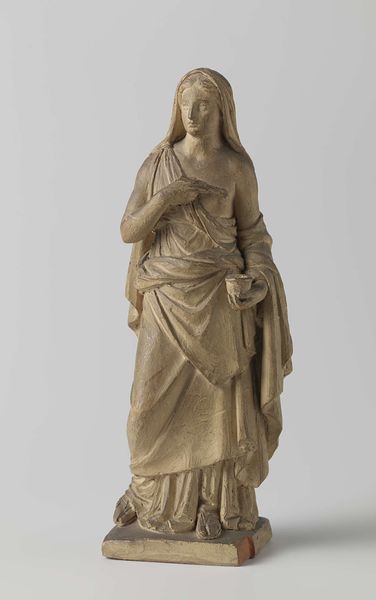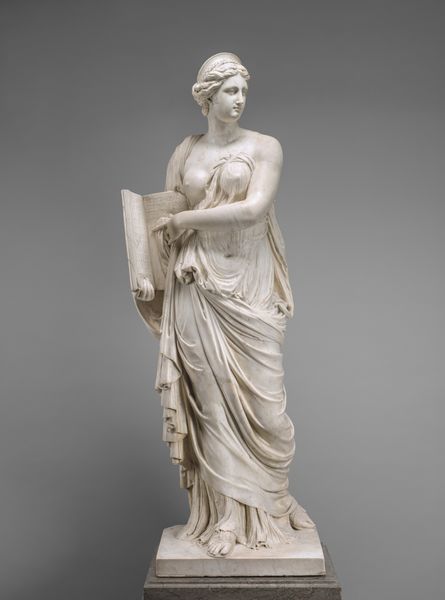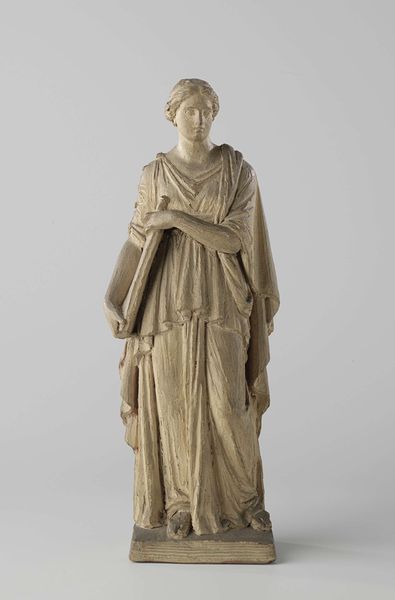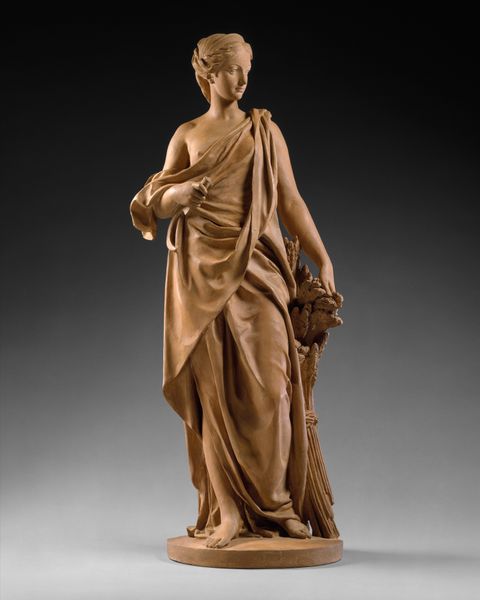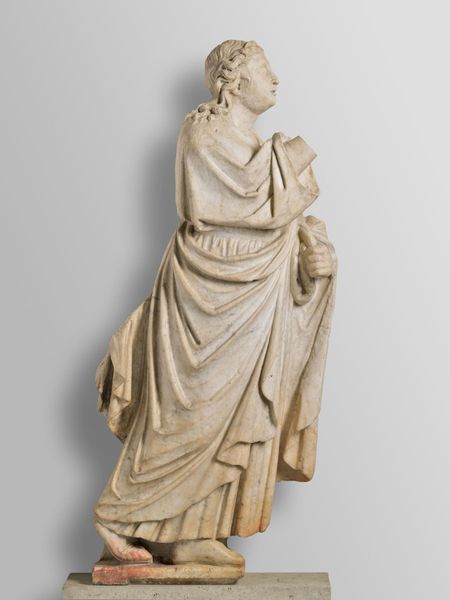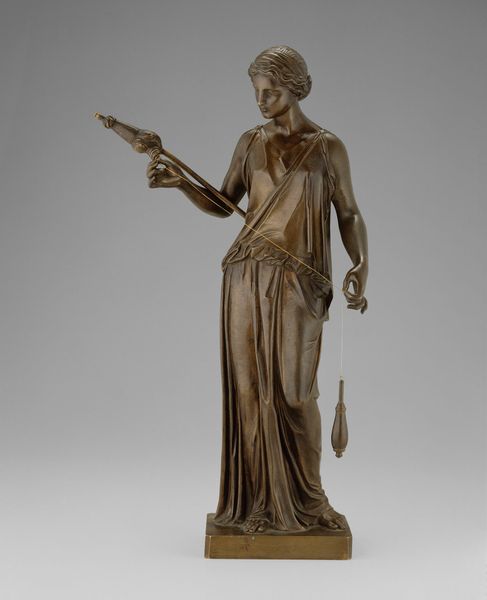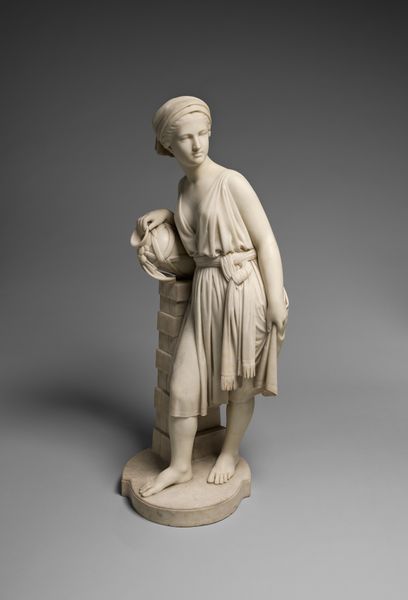
sculpture, marble
#
neoclacissism
#
allegory
#
sculpture
#
classical-realism
#
figuration
#
sculpture
#
history-painting
#
decorative-art
#
marble
Dimensions: Height: 18 3/4 in. (47.6 cm)
Copyright: Public Domain
Editor: Here we have Clodion’s "Minerva" from 1766, a marble sculpture residing at the Metropolitan Museum of Art. It strikes me as embodying both strength and grace. What symbolic readings can we draw from it? Curator: The Minerva figure resonates with a profound lineage of imagery. Notice the helmet – a direct visual reference to classical antiquity, immediately situating her as a figure of wisdom and strategic warfare. But observe how Clodion softens these martial aspects with delicate drapery and a gentle expression. How does that contrast play for you? Editor: It makes her feel less like a fearsome warrior and more like an allegorical figure – someone who represents ideas about civilization and reason rather than just military might. Curator: Precisely. And the inclusion of the aegis, bearing the Gorgon’s head, acts as an apotropaic device—an image intended to ward off evil. It speaks to a deep-seated human impulse to protect against unseen forces. How does knowing that change your perception of her gesture of holding something in her hand? Editor: Now, it's like she’s consciously deploying power. The whole sculpture becomes an embodiment of calculated protection rather than mere aggression. It’s almost like a charm or talisman, which is really interesting. Curator: Indeed, seeing beyond the immediate representation to its cultural and psychological underpinnings allows us to unlock the symbolic potential embedded within it. Editor: I hadn't considered how charged even seemingly decorative details could be. It changes how I look at classical sculptures completely!
Comments
No comments
Be the first to comment and join the conversation on the ultimate creative platform.
